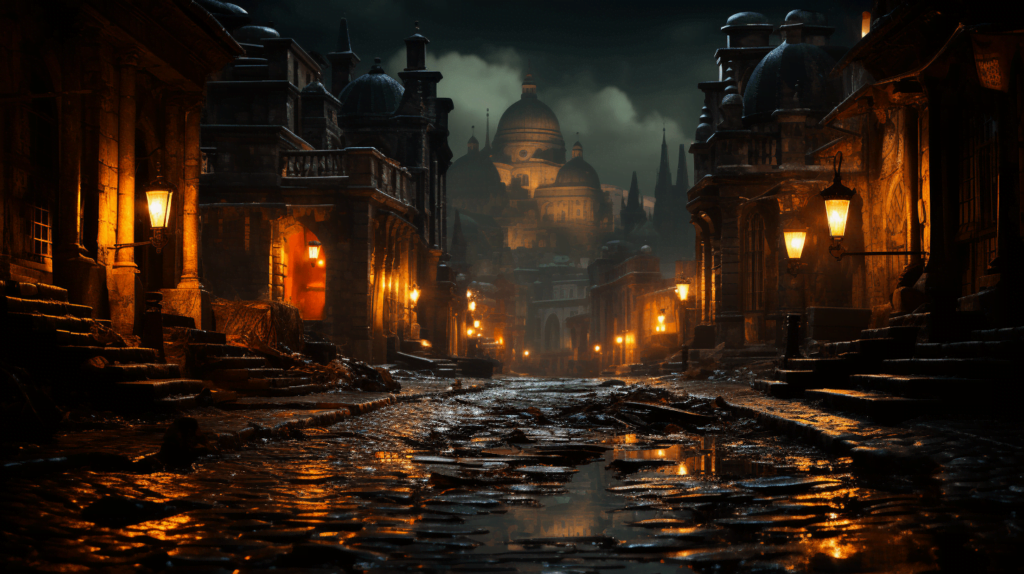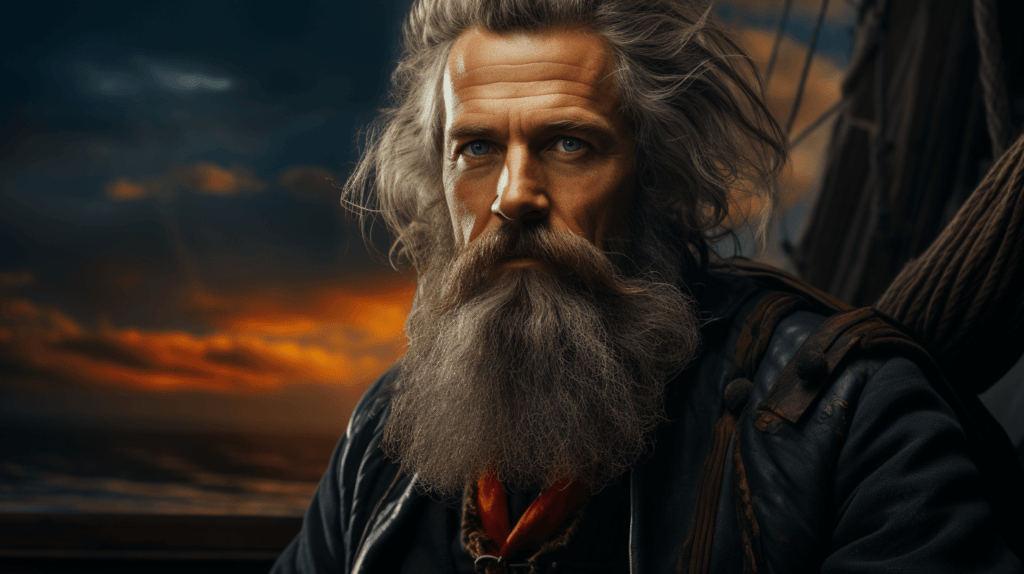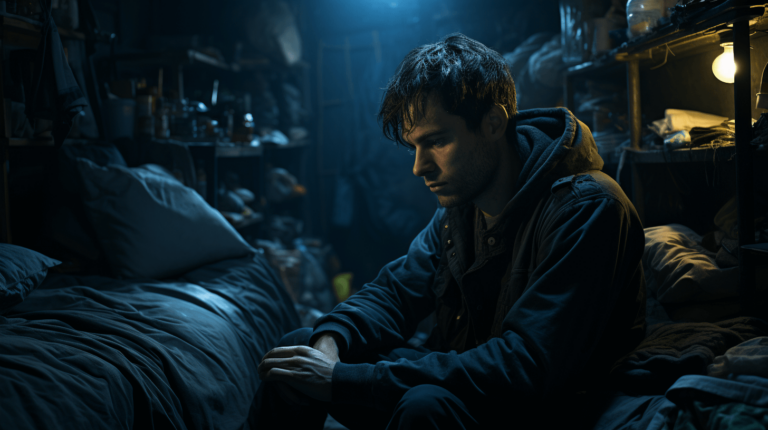In the Eye of the Storm
Part 1:
The Manifold of Shadows

In the heart of the quiet town, where cobblestone streets danced with the flickering lanterns’ light, lived a man named Ernest. He was not unlike you or me; he had fears, he knew anger, and he harbored pride. Yet, he carried them as if they were foul vermin gnawing at his soul, for he resisted these feelings with all his might. He felt it necessary to combat these emotions, pushing them away as if they were the plague, only to find that they would persist, returning stronger and bolder with each passing day.
It was a gloomy, storm-ridden evening. Ernest, sitting alone in his modest home, was ruminating over a recent altercation with a fellow townsman. The room seemed colder, filled with an eerie silence, broken only by the violent lashing of rain on the windowpane. He felt his heart filled with anger and resentment, and though he tried to banish such feelings, they continued to persist. With every crack of thunder, the fury inside him grew, matching the storm’s intensity outside. He knew not what to do; the resistance had grown tiresome.
Fear came to him in the form of looming darkness, creeping into his heart each night, as daylight dwindled and nightfall began. It whispered dreadful tales into his ear, telling him of horrors unseen. Though Ernest sought to ignore them, these tales grew in his mind, gnawing at his sanity, persisting in their haunting song.
Then, there was his pride, the most stubborn of all. It clouded his judgement, filling him with an obstinacy that strained his relations with others. He viewed it as a protective mantle, but it was a wall, one that isolated him from the world and from the warmth of fellowship.
Ernest was caught in the thrall of these emotions, his peace lost in their tumultuous sea. He resisted, but they persisted. Little did he know, he was overlooking a significant truth – he was in control of his perception.
Part 2:
The Veil of Perception

In his continuous struggle against his own emotions, Ernest found an unexpected companion in an old sage who resided at the edge of the town. The sage was known for his wisdom and knowledge, and many townsfolk sought his guidance in times of difficulty. The old man listened to Ernest’s tale of tumult, his gaze calm and understanding, and his mind sharp as a rapier, piercing into the depths of Ernest’s quandary.
“My dear Ernest,” the sage began, his voice as soothing as a summer’s breeze, “you wrestle with fear, anger, and pride, believing they are monstrous beasts intent on devouring you. But consider this – it is not these emotions that trouble you, but how you perceive them. They are not wild beasts, but untamed horses. You must learn to ride them, not resist them.”
Ernest listened with bated breath, his heart pounding in his chest as the sage’s words resonated with him. “But how?” he asked, desperation creeping into his voice. The sage’s response was simple, yet it carried profound weight.
“Acceptance, Ernest. It is the key to quell the storm within. Fear exists, but it is you who decides whether it is a monster or a guide. Anger is present, but you choose if it is a wildfire or a tool. Pride resides, but it is your choice to let it isolate you or to use it as a source of strength. In all this, remember, you are in control.”
Ernest pondered the sage’s words, their profoundness striking a chord within him. He had been in control all along. How he chose to perceive his emotions was his decision, his responsibility. Could he truly accept them, tame them, and regain his peace? The thought seemed daunting, yet filled with promise.
Part 3:
The Dawn of Acceptance

Emboldened by the sage’s wisdom, Ernest embarked on a journey of self-discovery. It was not a journey through mountains or across oceans, but within the realms of his own heart and mind. The path was not easy; it was strewn with hardships and moments of self-doubt. But with every step he took, he felt a newfound strength brewing within him.
First, he faced his fear. As darkness fell, he no longer saw it as a monstrous creature of the night, but as a guide, teaching him to navigate in the absence of light. Fear was no longer a dreadful whisper, but a silent friend, helping him to understand the value of courage.
Next, he confronted his anger. The anger he once saw as a wildfire, he now perceived as a blacksmith’s forge, a tool to mold and shape, rather than destroy. He felt anger, but he did not let it consume him. Instead, he learned to use it to drive his actions towards fairness and justice.
Finally, he faced his pride. It was no longer a wall isolating him, but a mantle of self-respect. He realized that having pride did not mean refusing to listen to others, but to respect oneself enough to stand firm in one’s beliefs, while still being open to the wisdom of others.
Each day, Ernest learned to accept his emotions, perceiving them in a new light. He realized that acceptance was not surrender, but understanding. His fears, his anger, his pride, they were part of him, and he was in control. As he chose to perceive them differently, his life took a turn. The town that once saw him as a man wrestling with his emotions, now saw a man at peace, living harmoniously with them.
Ernest had found the antidote to his resistance, acceptance. He understood that the control was always in his hands, and how he perceived his emotions was his responsibility. He had turned his turbulent sea into a serene lake, a testament to his transformation, a beacon for those lost in the throes of their own emotions.
And so, Ernest’s story became a legend, a tale of transformation and acceptance, a lesson to all that the power to perceive lies within us, and accepting oneself is the first step towards inner peace.







